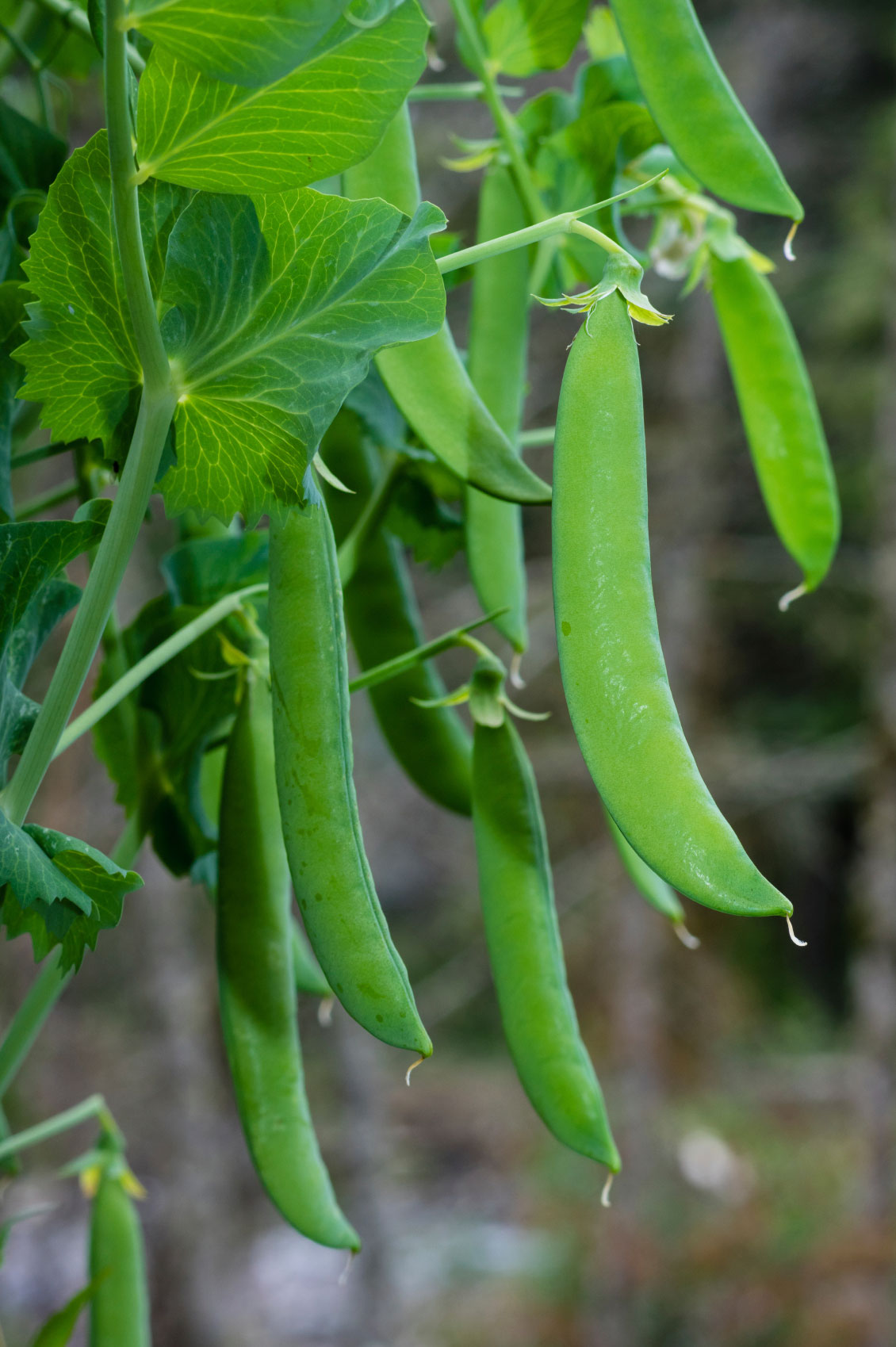Green Peas - A Vitamin Powerhouse
TEXARKANA, Ark. –
Make a visit to the farmers market in the months of April and May and you are likely to find a basket of chubby, sweet peapods on a farmer’s table available for purchase. These small green globes known as peas are the star of the spring season.
Purchase yours and make a dent in your daily dose of vitamin requirements. This springtime favorite is a vitamin powerhouse with vitamins A, B-1, B-6, C, and a supersized serving of osteoporosis-fighting K. In fact, one cup of boiled green peas has almost half of your RDA (recommended daily allowance) of vitamin K-1, known for maintaining bone health and helping blood to clot to prevent bleeding. Peas are high in fiber and low in fat and contain no cholesterol. Plus, they're a good source of vegetable protein.
In fact, a three fourth cup serving has more protein than one fourth cup of almonds or a tablespoon of peanut butter. No wonder peas were favored by the ancient Egyptians, who buried them in their tombs for use in the afterlife.
Peas are a part of the legume family, which also contain beans and lentils. Each pea plant produces multiple pods with a row of seeds inside. Peas are best quality when they are immature and fully expanded but not hard and starchy. If picking yourself or purchasing at the farmers market, pea pods can be stored in a plastic bag in the refrigerator for two weeks. They will deteriorate only slightly in quality when stored. Once shelled they must be used immediately because their quality deteriorates rapidly.
There are three types of pea that are most popular in our area. Those are garden peas, snow peas and snap peas.
Garden peas are also called English peas or green peas. These are the ones usually grown in a garden and bought at the grocery store in a can or frozen food section. Once picked, the firm, plump pods are discarded and the sweet peas inside are cooked or eaten raw.
Snow peas are often used in Asian dishes, such as stir-fry. The pod is flat and edible with its tiny, immature seeds inside. They tend to have a mild flavor and can also be eaten raw or cooked.
Snap peas are sometimes called sugar snap peas because of their sweet taste and are a cross between garden and snow peas. They are crunchy and can be eaten whole, raw or cooked.
If you were the kid who pushed your peas around in your plate, trying to feed them to the dog or hide them under a napkin, it's time to reconsider this vitamin powerhouse and give peas a chance again with Sautéed Peas and Onions. You can cook them in a matter of minutes and they only have 43 calories per serving, 5 grams fat, 85 mg sodium, 7 net carbohydrates, and 5 grams protein.
If you want more information on growing peas for your backyard garden, download the Home Gardening Guide or for using them in MyPlate, contact the Miller County Extension Office, 870-779-3609 or visit us in room 215 at the Miller County Courthouse.
Sautéed Peas and Onions
- 2 tablespoons olive oil
- 1 onion, chopped
- 2 cloves garlic, minced
- 2 cups shelled peas or 16 ounces frozen
- 2 tablespoons chicken stock
- Salt and pepper to taste
- In a skillet over medium heat, add olive oil.
- Once hot, add onion and garlic.
- Cook 4-5 minutes, until becoming translucent.
- Add peas, and stir in chicken stock.
- Season with salt and pepper to your taste.
- Cover, and cook until the peas are tender, about 10 minutes.
By Carla Due
County Extension Agent - FCS
The Cooperative Extension Service
U of A System Division of Agriculture
Miller County Cooperative Extension Service
400 Laurel Street, Suite 215 Texarkana AR 71854
(870) 779-3609
cdue@uada.edu
